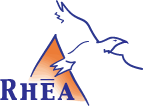
The scope of the investigation was to apply geophysical technology at 19 proposed boring locations to attempt to positively identify subsurface features of interest, especially any unexploded ordnance (UXO) that might still have been in the ground from the Civil War, but also any other metallic obstructions that could be present.
Civil War UXO Survey
A series of Civil War battles occurred in the outskirts of Petersburg, VA over a period of nine months at the end of the war. The exact location changed over the course of the battles, but they mostly occurred in the southeastern region of the city and the Lee Avenue Gate Intersection project site is located near one of the lines of fighting. Multiple unexploded ordnance from this period has been found at sites in the Richmond and Petersburg area, including artillery shells and cannonballs. Early landmine technology was also used, in addition to artillery and cannonballs, although ordnance associated with this was not anticipated. A fatality occurred with a Civil War UXO in 2008 and in 2011 an unexploded cannonball was found at Fort Lee during an archaeological survey.
Prior to planned road construction, the scope of the investigation was to apply geophysical technology at 19 proposed boring locations to attempt to positively identify subsurface features of interest, especially any unexploded ordnance (UXO) that might still have been in the ground from the Civil War, but also any other metallic obstructions that could be present.
The subsurface surveying was undertaken with a Geonics EM-61 time domain metal detector. The results of the survey depict that much of the area of interest at the Lee Avenue Gate Intersection site does contain small masses of metal, but drilling would be able to avoid these features. Significant metal was found to be present around one of the proposed borehole locations. This proposed borehole was located near a manhole cover such that the interference could be reasonably assumed to be related to utilities. A very large mass of metal of unknown origin was located west of one of the other proposed borings and disseminated metal was present at three other locations.
A pipeline was found about 10 feet west of one of the boring locations, but the proposed boring location itself was clear. Metal was not found at the locations of the other borings.
It is emphasized that the results did not specifically identify if the metal was UXO related. In some cases, it is possible to determine the source of a metal anomaly, such as would be the case if the anomaly is linear and it is reasonable to assume that the source of the metal response is due to the presence of a buried pipe or other utility. In most cases, however, it is not possible to determine the source of the metal response without digging.
Services: Cultural Resources Management , Geophysics
Industries: Federal Government , Transportation



